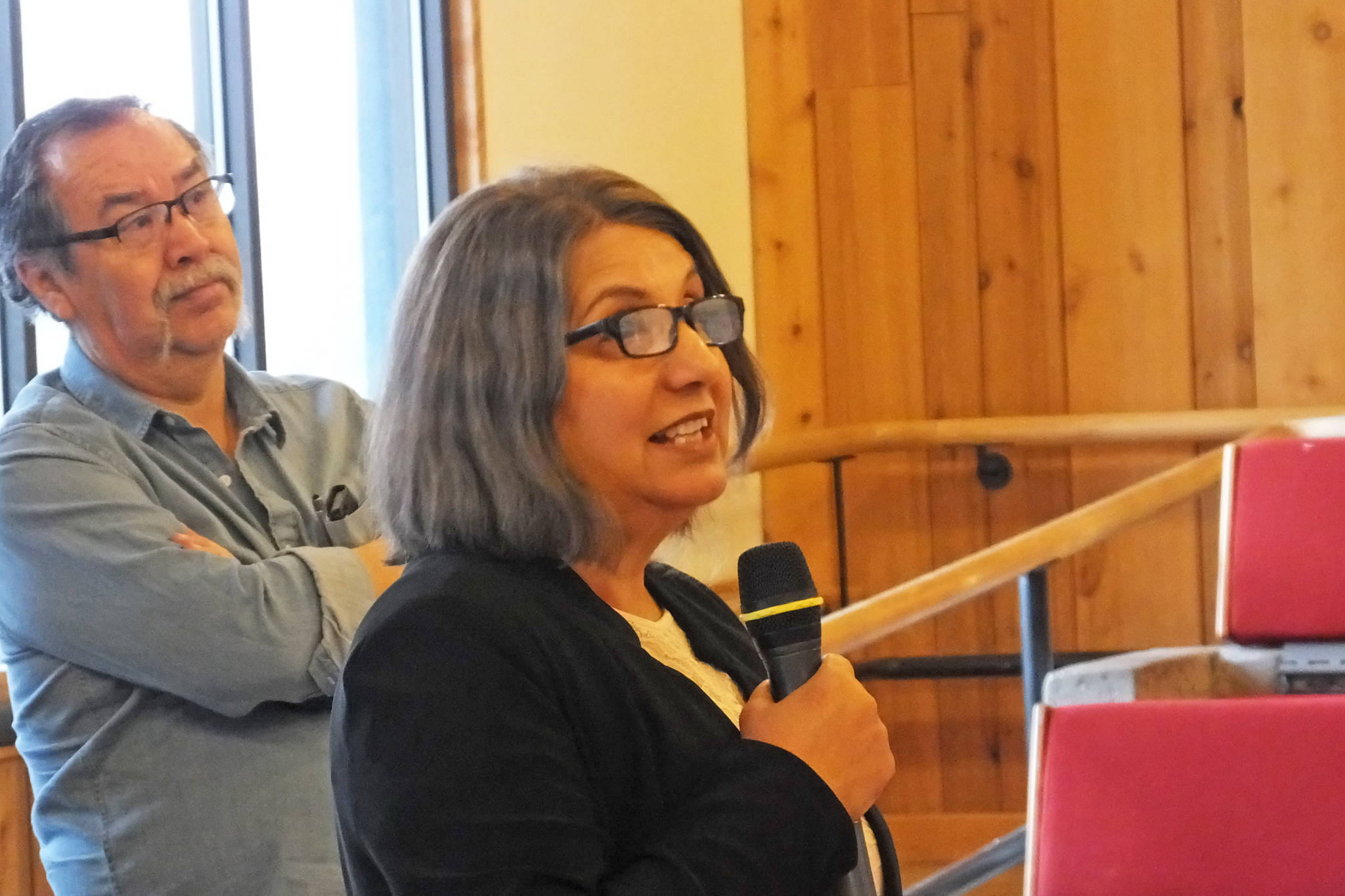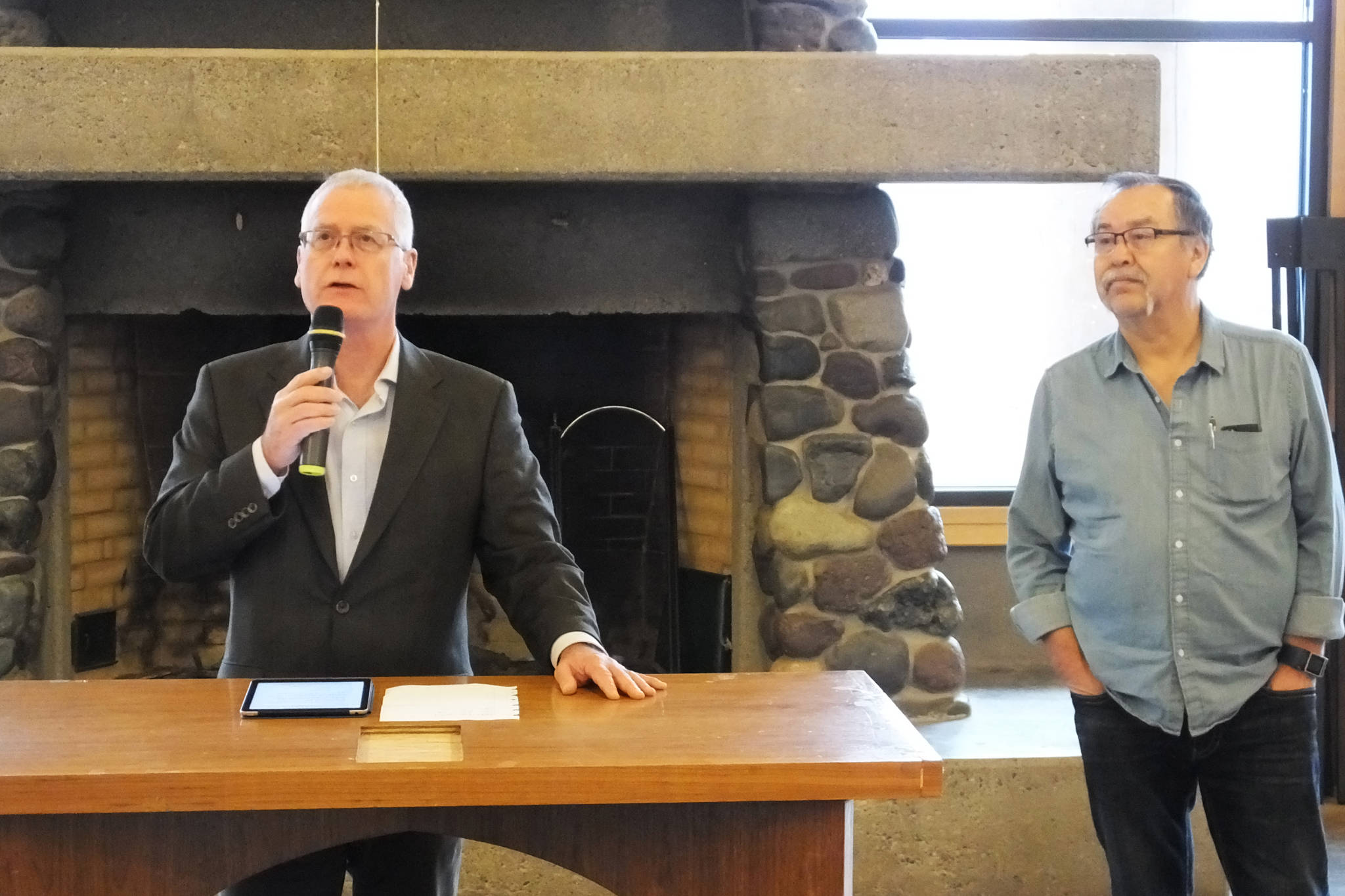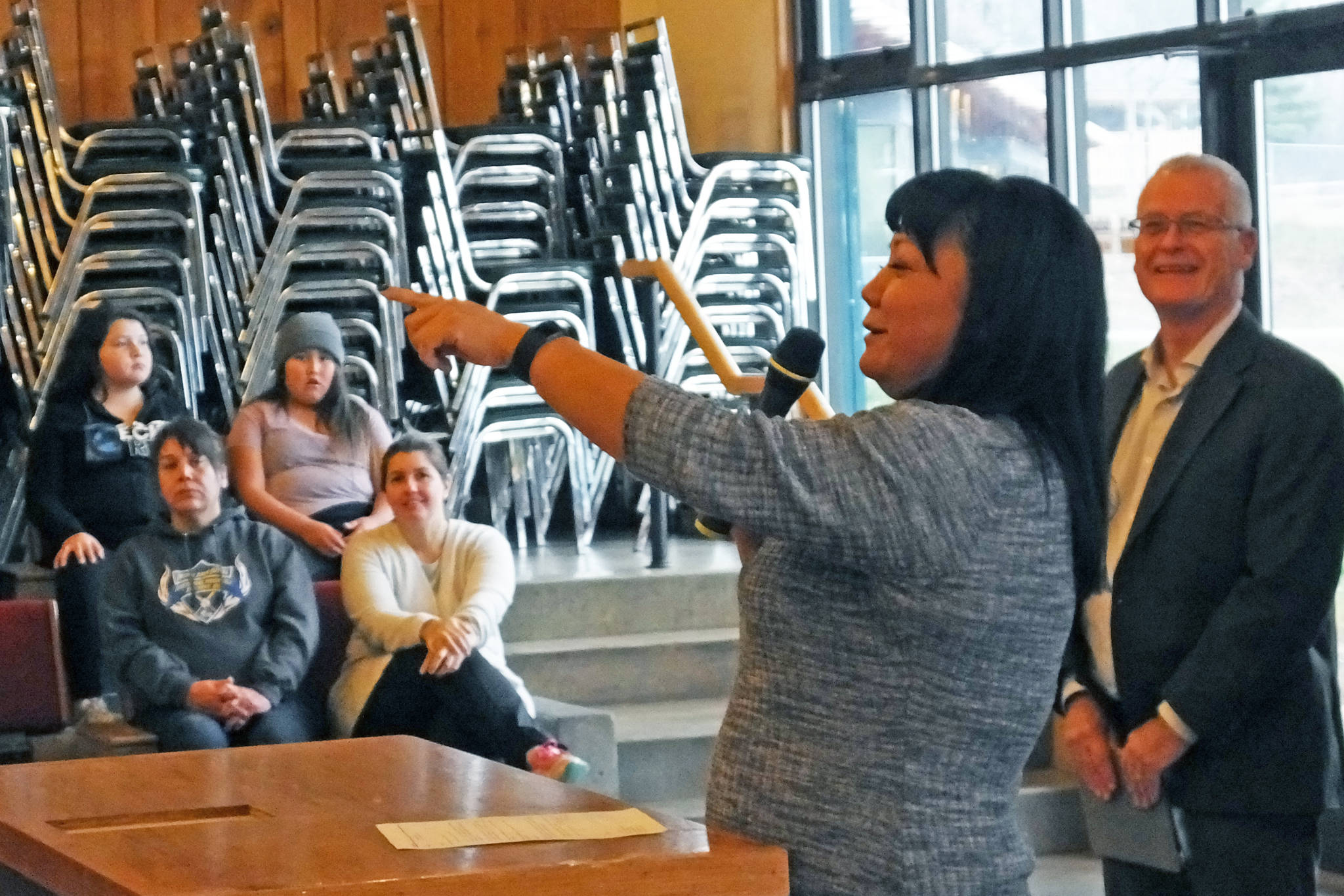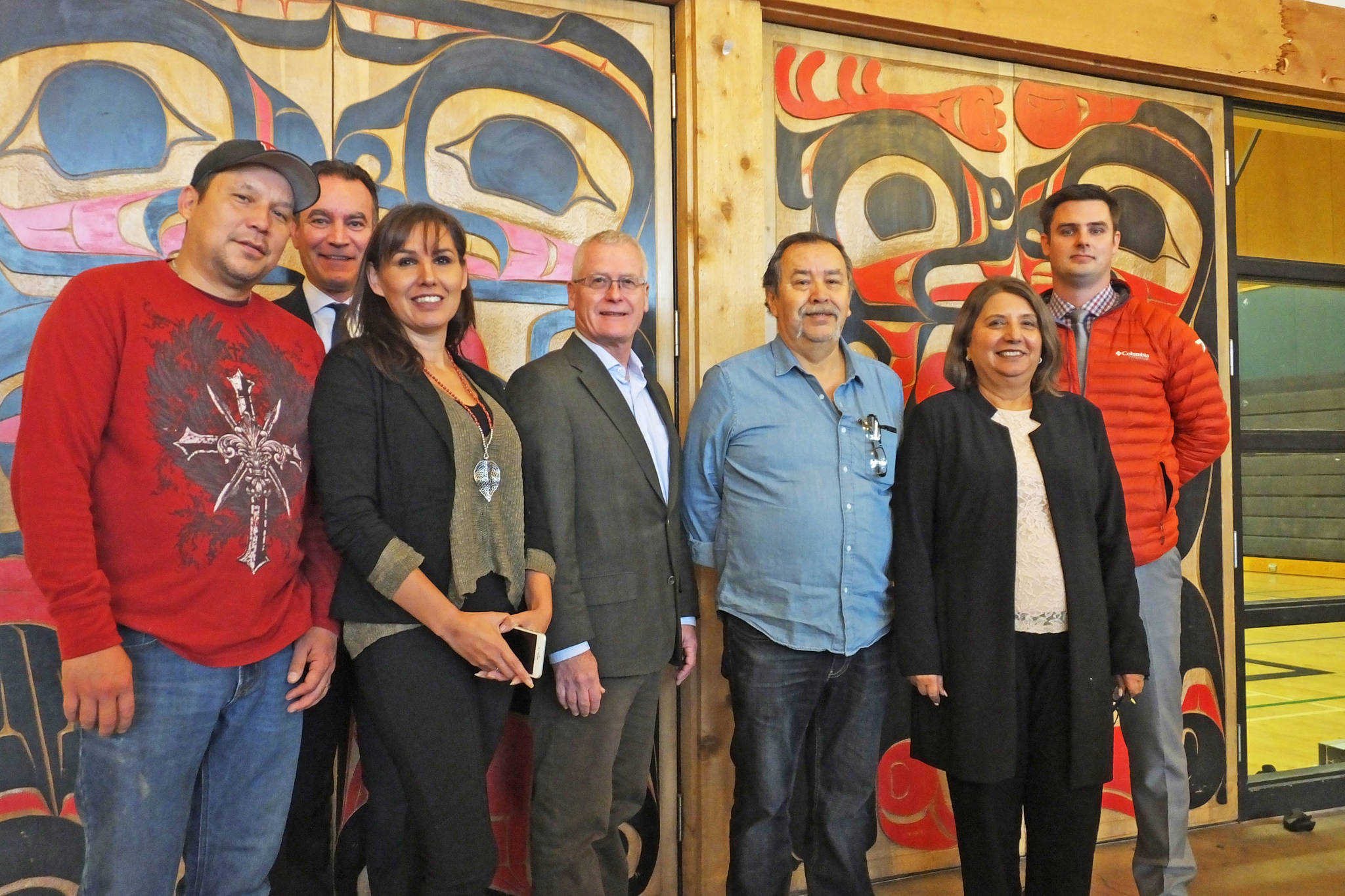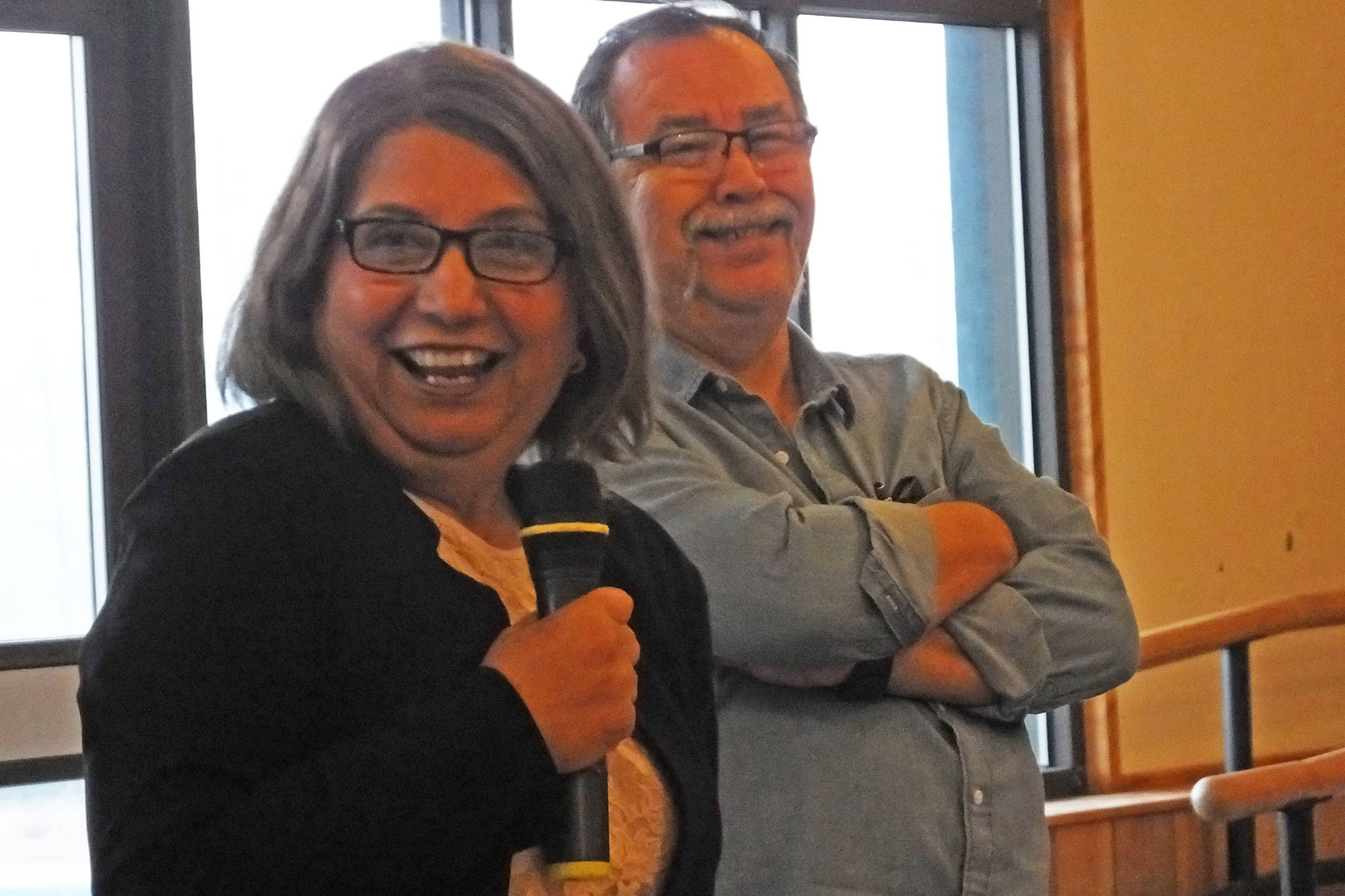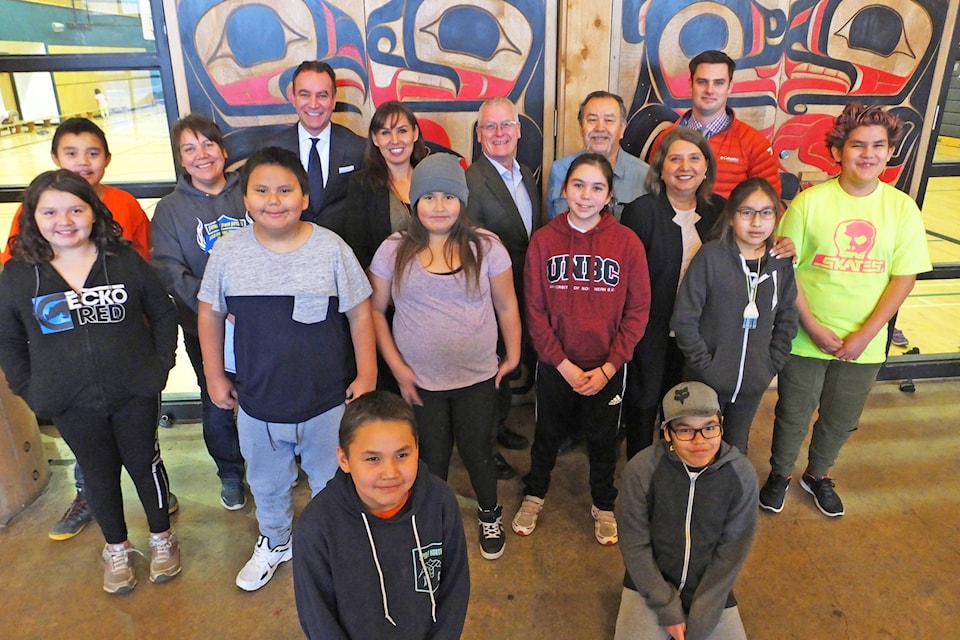The loss of cell service on the stretch of Highway 16 between Smithers and the Hazeltons will soon be a thing of the past.
Construction of a Rogers cell tower began in late September and is expected to be completed in the coming months.
Witset will be the last First Nation along the northern stretch of the TransCanada Highway to not have cell service, according to a release from the B.C. Ministry of Citizen’ Services.
B.C. Citizens’ Services Minister Jinny Sims was in Witset to make the announcement Friday.
“We have to look at reducing the digital divide because without reducing the digital divide, the economic participation cannot be there,” Sims told the gathered crowd.
“When I travel through areas around the province, I hear about everyday challenges about having cell service. When there’s an emergency on the highway or a loved one is dealing with a crisis such as the threat of forest fires or flash flooding, the last thing they want to see — which we saw on the drive to here — was no service,” added Sims.
Today I joined the Witset First Nation to announce the construction of a new cell tower. This tower will connect the last community along the Highway of Tears with potentially life-saving cellular service:
— Jinny Sims (@jinnysims)
Provincial and local leaders hope this will help end the notoriety of the artery for northern B.C., dubbed the Highway of Tears because of the many women — mostly Indigenous women — who have been murdered or disappeared from Prince George to Prince Rupert.
Witset Chief Victor Jim said even just having the ability to call for a ride instead of being forced to hitchhike should help make things safer.
Priscilla Naziel, a first responder and social development manager in Witset, gave moving examples of how not having that connectivity affected her and the people she tries to help.
She described what they had to deal with during the search and rescue operation to try to find missing mushroom picker Frances Brown.
“Our [handheld fire department] radios didn’t go all the way up … and people had to travel all the way down basically to the CN tracks before we could use the cell service. And that was done for a while until the inReach [satellite communication] came in. And I was also told that because their was no cell service they couldn’t use their GPS to find that cell that [Brown] had,” said Naziel.
While she acknowledged poverty was a problem in the community that kept people from having communication devices — even landline phones — there was a harrowing incident that suggested even one person in a crowd with a working cell phone could be life saving, and the over reliance on handheld radios.
In this case, people were lucky to have survived without it.
“There was a possible four-person overdose, and our radios were kicking in and out. But people did get their medical attention and none passed away, for which I’m thankful for,” said Naziel.
Another example she listed a person who was injured and a passerby who couldn’t find a working landline nearby, eventually reaching the rec centre to call for help.
“It was actually an assault and the person had a broken shin. So I just don’t know how long that person was bleeding out,” said Naziel, pointing out this person was again lucky to get the medical attention they needed, but that time frame was a problem.
There were more specific stories to make her point, but then she discussed more general considerations.
“There are 76 elders in our community, and some are disabled,” she said.
Witset considered getting LifeLine buttons for them, but she pointed out that requires a phone or cable hooked up.
“Again, the poverty comes into it, and paying for this LifeLine,” said Naziel.
Safety was also top of mind to help first responders who drive around trying to get a signal if they don’t have a radio on them. Another example was the flood this year that had Witset staff going door to door instead of being able to reach people quickly on their phone or via a mass notification similar to the one Smithers has through Everbridge.
“Just last May, 11 homes were directly affected by an evacuation due to a flood … Our sewer station was down so all the other houses were affected, too. But the incident operations commander had to go up the road to do his texting, do his phoning — go back down, go back up, go back down,” described Naziel.
“It took time away from the actual incident.”
Chastity Davis, chair of the minister’s advisory council on Indigenous women, said in a media release that cell service will end isolation for women travelling along the highway.
“Better cell phone coverage means women can reach loved ones or emergency services in times of need, and it will create security and reassurance to everyone travelling on Highway 16,” Davis said.
Stikine MLA and Rural Development Minister Doug Donaldson acknowledged the safety aspect before giving an example of how important this is economically.
“A few years ago I was at the finger joint mill doing the tour and talking to some of the folks there and they were saying — I think some of the machinery is from Germany — and some of the technicians come and when there’s some troubleshooting to do they actually phone in to an office … and as they’re looking at the machine they’re getting guidance on how to … fix the problem. They were kind of blown away that they couldn’t do that. Even walking to the church to get reception doesn’t work because they need the machine in front of the as they’re trying to troubleshoot,” said Donaldson.
Chief Jim said the connectivity would benefit the newly upgraded RV park and campground by the museum.
“The people that stay there will be appy to hear that they can phone home and let their loved ones know that they’re safe, and that they’re in the best RV park in the Bulkley Valley,” said Jim.
When operational, the cell tower will enable voice, data and text services via high-speed wireless and internet coverage on 4G and LTE networks for Rogers and Fido customers. Customers using other providers will be able to dial 911 in the community and along the highway.
The new tower is providing wireless coverage to an additional 22 kilometres along the highway.
Rick Sellers, B.C. president for Rogers Communications, experienced the lack of service firsthand as he drove from Smithers to Witset.
“On the way here, [it was] very sporadic. Eventually, we didn’t have coverage during the trip from the airport, so not great. That will change in another two months,” said Sellers.
He gave his perspective as a visitor on why that connection was so important.
“We live in a mobile world. Reality is, gone are the days where people are stuck in their offices and have a land line that somebody’s used to calling and you can pick up the phone and say hello. We’re in a world now … where we now need our devices to stay connected, to stay connected to our families, etc.; so having that was something you take for granted, but when you don’t have it you realize how much dependency you have on those devices,” said Sellers.
He added that this is not the end of working with the Province to connect northern B.C.
“We understand it’s important, obviously, to do our part as a corporate citizen. At the same time with the provincial government, it’s one of their clear mandates to make sure we connect remote communities; so we’re making sure we work with them, identifying areas that make sense for us to work together and then roll out as much as we can to connect remote communities,” said Sellers.
The project is being funded with a $1.2-million grant from the Province through Northern Development Initiative Trust.
Up to six local jobs will be created during construction of the cell tower.
